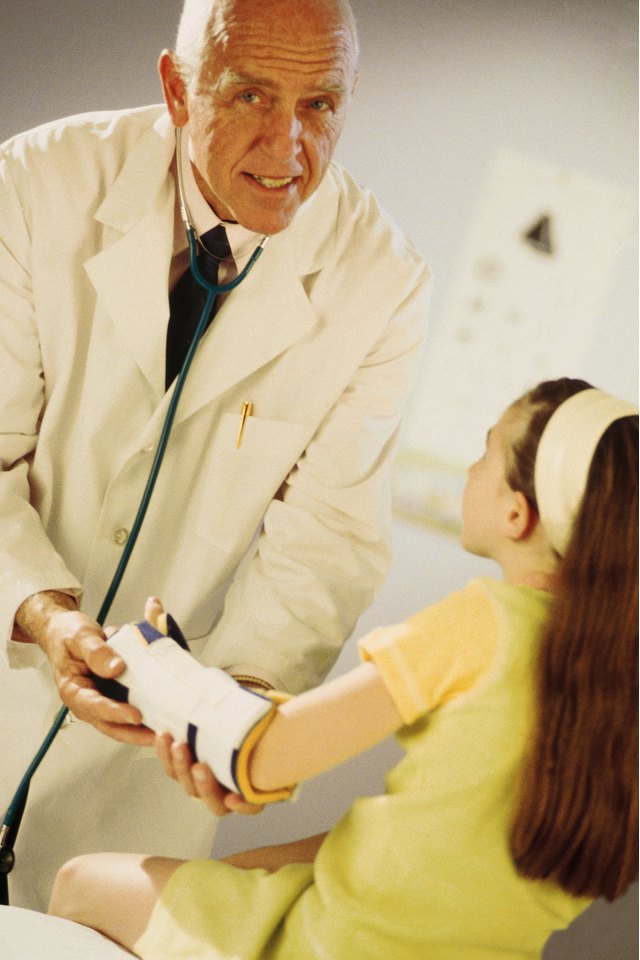Physical Activities for Children After a Broken Arm

Once your child has his arm in a cast, it can take anywhere from 3 to 10 weeks for the arm to heal and the cast to be removed. Although the cast protects the child’s arm somewhat, he still must avoid any vigorous activities like horseback riding, bicycling or sports. Wearing the cast may affect his balance and make him more likely to fall and re-injure his healing arm or hurt another part of his body.
Swimming
If your child breaks her arm during summer, taking her swimming can help keep her spirits up and work off some energy. Make sure to ask her doctor if she has a waterproof cast before taking her into the pool and cover it with a special water-proofing cast cover for extra protection. Have her stay in the shallow end and keep her arm stationary while she paddles with her other arm and kicks with her legs. If her cast isn’t waterproof, wrap it in a waterproof cover and let her float around in an inflatable tube. She can kick her legs while resting her arms on top of the tube.
Stationary Cycling
A child with a broken arm can’t ride a bike or ski, but he can exercise his legs using gym equipment. Sign him up for a short-term membership at a family gym or find a local community center that has exercise equipment. He can sit on a low stationary bike as long as it’s sturdy enough that he won’t fall off while moving his legs. He should always use the slowest setting on any machine and hold onto the safety bar with his healthy arm at all times.
Yoga
Doing children’s yoga and stretching movements will help your child keep her muscles strong. Play a children’s yoga DVD and help her follow along. She’ll be able to do certain movements as instructed, but she’ll need to modify certain poses. Whenever the DVD calls for her to brace herself with her arms or do anything else she can’t do, help her come up with a different pose that doesn't put pressure on the broken arm. She can also lie on her back and pull her knees up to her chest while she waits for a pose she can do.
Kicking
Little boys particularly may miss playing aggressive games like soccer while they’re injured, so they’ll enjoy doing kicking exercises. Set up two chairs in either end of a hallway that’s free of furniture or breakable knickknacks. Have the child sit in one chair while you or another child sit in the other and kick a soft beach ball or foam soccer ball back and forth. If you’re in an enclosed hallway, the ball won’t be able to go past him so he can stay seated and won’t need to dive for the ball, keeping his arm protected.
References
Writer Bio
Cooking, travel and parenting are three of Kathryn Walsh's passions. She makes chicken nuggets during days nannying, whips up vegetarian feasts at night and road trips on weekends. Her work has appeared to The Syracuse Post-Standard and insider magazine. Walsh received a master's degree in journalism from Syracuse University.
